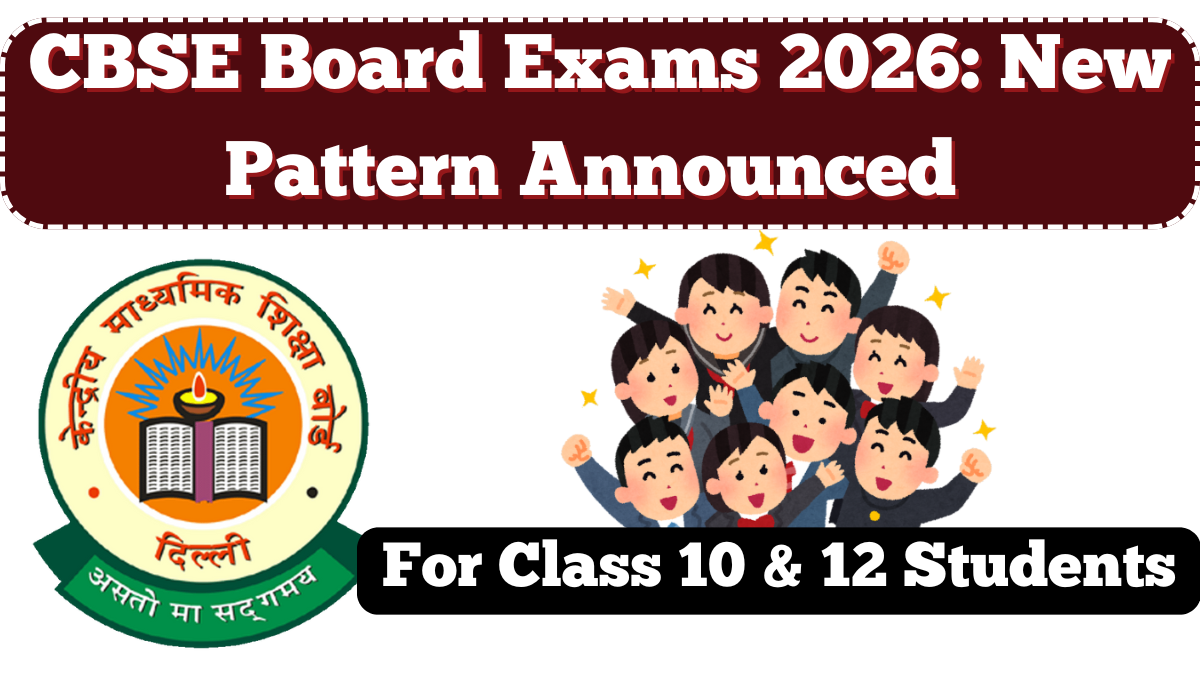The CBSE exam pattern change 2026 has officially been announced, and it brings major updates for both Class 10 and Class 12 students across India. As part of the National Education Policy (NEP) implementation, the Central Board of Secondary Education is aligning its examination structure with a more competency-based approach, aiming to reduce rote learning and foster real-world thinking skills.
These changes under the CBSE 2026 plan are not optional—they will be applicable for the academic year starting April 2025, affecting students appearing in the 2026 board exams. With this major shift, it’s crucial for teachers, students, and parents to understand the updated model thoroughly.
This article explains everything you need to know about the board exam pattern for Class 10 and 12, including revised weightage, internal assessment updates, and subject-level changes.

Key Highlights of the New CBSE 2026 Board Exam Pattern
The revised CBSE exam pattern change 2026 emphasizes applied learning and conceptual clarity. Here are the most notable changes:
-
Objective-type questions: Up to 50% of questions in most subjects will now be MCQs or competency-based.
-
Reduced descriptive questions: Weightage of long-answer writing will be reduced to 30%.
-
Internal assessments: Now count for 20%–30% in final grades and must be competency-focused.
-
Digital evaluation: Implementation of AI-supported on-screen marking for faster, fairer results.
This change in the board exam pattern aims to encourage students to understand concepts better rather than memorize them.
Updated Subject-Wise Weightage for Class 10 & 12
Here’s a table reflecting the CBSE exam pattern change 2026 for key subjects:
| Subject | Objective/MCQs | Short Answers | Internal Assessment |
|---|---|---|---|
| Mathematics | 40% | 40% | 20% |
| Science | 50% | 30% | 20% |
| Social Science | 40% | 40% | 20% |
| English | 30% | 50% | 20% |
| Business Studies | 40% | 40% | 20% |
| Accountancy | 50% | 30% | 20% |
This new CBSE 2026 pattern has been designed in collaboration with NCERT and SCERT bodies to ensure a smoother academic transition.
What This Means for Students and Teachers
The CBSE exam pattern change 2026 shifts focus from theoretical memorization to analytical ability and interpretation. Here’s how students should adapt:
-
Practice competency-based questions using NCERT examples
-
Participate in school-level projects for internal marks
-
Use sample papers based on the new format issued by CBSE
-
Focus on time management with the new structure of shorter questions
For teachers, there will be dedicated training on how to set new-format questions and assess internal evaluations.
FAQs
What is the CBSE exam pattern change 2026 all about?
It refers to the revised structure of Class 10 and 12 board exams focusing more on competency-based, objective questions, and reduced focus on long-form answers.
Will the syllabus change along with the exam pattern in 2026?
No, the syllabus remains the same for now. Only the way it is assessed is being updated under the CBSE exam pattern change 2026.
How will internal assessments be handled under the new pattern?
Internal assessments will carry more weight and focus on projects, lab work, and application-based activities.
When does the new pattern take effect?
The new CBSE 2026 pattern will apply to students appearing in the Class 10 and 12 board exams in March 2026.
Will this pattern be used in all CBSE-affiliated schools?
Yes, all CBSE-affiliated schools across India and abroad must follow the new board exam pattern from the academic year 2025–26.
Are the changes permanent?
Yes, this is a long-term reform as part of the National Education Policy and will be followed going forward.
Click here to know more.
